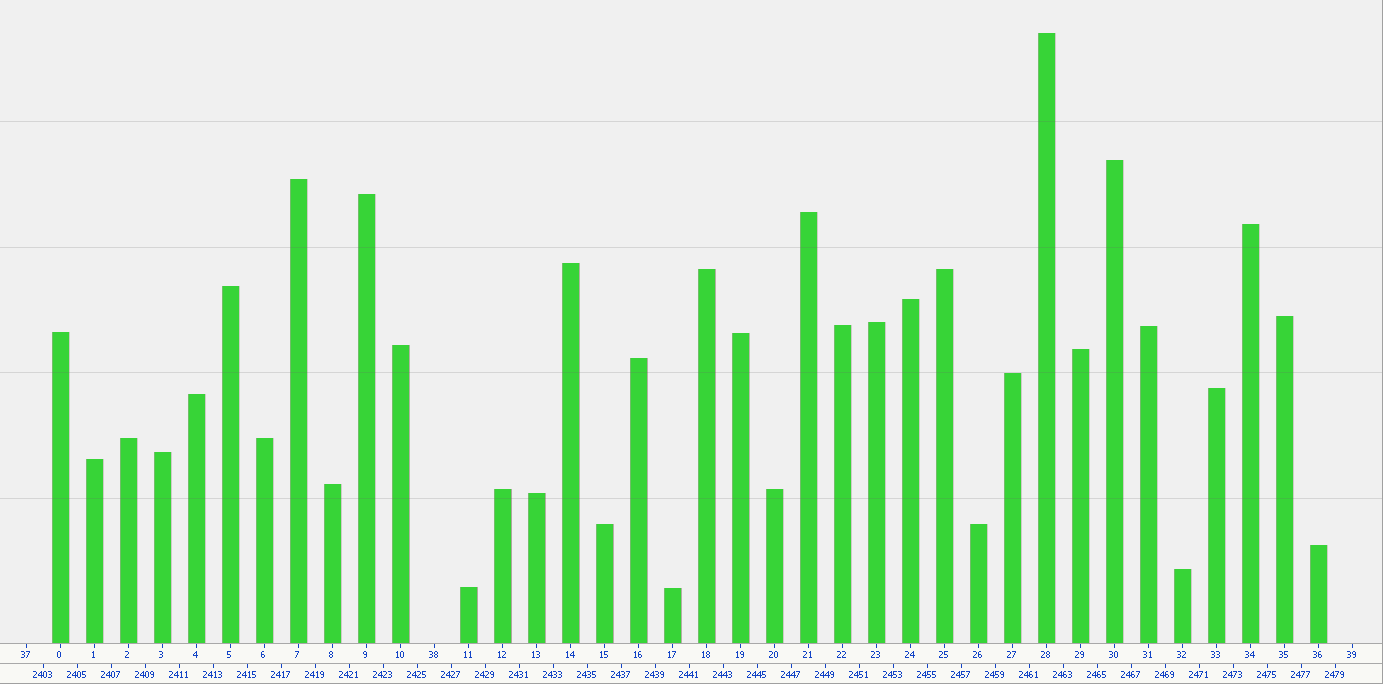How Bluetooth Technology Uses Adaptive Frequency Hopping to Overcome Packet Interference
Interference is one of the biggest challenges for any wireless technology in providing reliable data communication. Since wireless technologies like Bluetooth®, Wi-Fi, and 802.15.4 devices share a transmission medium, it’s possible for a data packet that is being transmitted to be corrupted or lost if it collides with another packet being transmitted at the exact same time and on the same frequency channel.
One of the techniques Bluetooth technology uses to overcome interference and find a clear transmission path that avoids packet collision is the application of a form of frequency-hopping spread spectrum (FHSS) called adaptive frequency hopping (AFH). Bluetooth divides the frequency band into smaller channels (e.g. 40 channels in the case of Bluetooth Low Energy) and rapidly hops between those channels when transmitting packets. To further reduce the chance of interference, Bluetooth adapts its hopping sequence. Channels that are noisy and busy are dynamically tracked and avoided when sending packets.
Recently, Martin Woolley, developer relations manager with the Bluetooth Special Interest Group (SIG), released a paper on Understanding Reliability in Bluetooth Technology. In this deep dive into Bluetooth reliability, Woolley explains how Bluetooth technology uses adaptive frequency hopping to lower the probability of collisions and offset inevitable packet loss.
Below is an excerpt from that section of Woolley’s paper.
Adaptive Frequency Hopping
One of the major challenges in radio communications concerns collisions, which are particularly problematic in busy radio environments. Earlier we explored collisions and explained that a collision occurs when two or more devices transmit data on the same radio channel in overlapping time periods, and that different radio technologies such as Bluetooth® technology and Wi-Fi can interfere with each other if their use of the radio spectrum overlaps.
Bluetooth technology mitigates the risk of collisions through its use of spread spectrum techniques. When two devices are connected, this involves a specific technique known as adaptive frequency hopping.
At each connection event, a pair of connected devices have the opportunity to use their radios to exchange packets at precisely timed intervals. But in addition to this, at the start of each connection event, frequency hopping occurs, with a radio channel being deterministically selected from the set of available channels using a channel selection algorithm. Each device in the connection will then switch to the selected channel and over time and a series of connection events, communication will take place using a frequently changing series of different channels, distributed across the 2.4 GHz band, thereby significantly reducing the probability of collisions occurring.
Of the 40 channels defined for use by Bluetooth Low Energy (LE), 37 of these channels (known as the general purpose channels) are available for use during connected communication.
Frequency hopping makes a great contribution to reliability in communication between connected devices but Bluetooth goes one step further.
In a given environment, some Bluetooth® radio channels might not be functioning well, perhaps because interference is impacting them, whereas other channels are working reliably. Over time, the list of reliable channels and unreliable channels may change, as other wireless communication devices in the environment come and go.
The primary device in a connection maintains a channel map which classifies each channel that is working well as used or otherwise as unused. The channel map is shared with the second device using a link layer procedure so that they each have the same information about which channels will be used and which will be avoided.
Devices use implementation-specific techniques to monitor how well each channel is functioning. If it is determined that one or more previously working channels are no longer working well enough, the channel map is updated. Conversely, if a previously bad channel is found to be working well now, its status will also be updated in the channel map. Channel map updates are then shared with the second device. In this way, Bluetooth ensures that it uses only known good channels, avoids problematic channels and keeps the channel map up to date so that it is always the optimal subset of channels that are being used. This is the adaptive aspect of the Bluetooth adaptive frequency hopping system.

Figure 10 – Adaptive Frequency Hopping distributing communication across channels
Figure 10 shows the way the Bluetooth channels were used by two connected devices during testing and illustrates the highly effective way in which radio use is spread across the ISM 2.4 GHz spectrum. At the bottom of the chart you can see the channel index and frequencies in MHz.
To learn more about reliability in Bluetooth® connection-oriented and connectionless communication systems as well as how to achieve reliability in Bluetooth mesh networks, check out Woolley’s in-depth paper on Understanding Reliability in Bluetooth Technology.